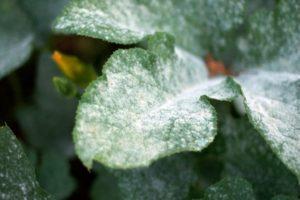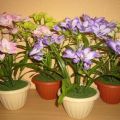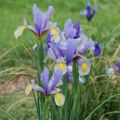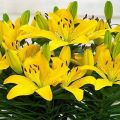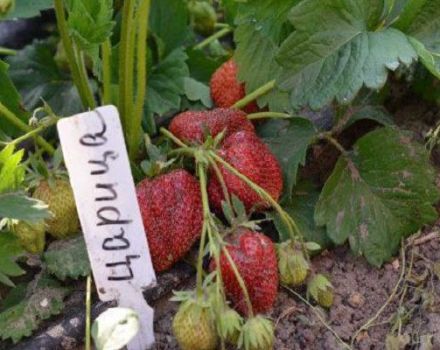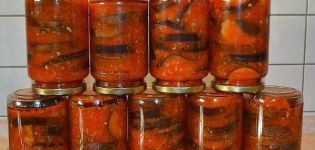Planting, growing and caring for freesia outdoors
Freesia is a spectacular corm plant. She is quite whimsical, so she is rarely seen in garden plots. To grow a decorative bush, you need to know how to properly plant and care for freesia in the open field. It can be grown not only in the garden, but also on the balcony or loggia - like a potted plant.
Description and characteristics of freesia
Freesia is a bulbous plant with oblong, narrow leaves and a branched inflorescence, consisting of 3-6 flowers. The plant is described as follows:
- the height of the bush varies, depending on the variety, from 20 to 70 centimeters;
- leaves, on average, are 15-20 centimeters long;
- narrow funnel-shaped inflorescences reach a length of 3-5 centimeters.
The bulb is planted in open ground in spring, dug out when autumn comes. Freesia blooms from the second decade of August before the onset of cold weather. The inflorescences have a varied palette, thinning the light citrus aroma. The flower is used as a decoration for flower beds, as a cut plant, and also grown as a mix in pots, being planted in several pieces in one container.
Types and varieties of plants
The flower belongs to the genus of corms of the iris family, and has 16 species. For growing in the garden and in containers, 3 types of freesia are adapted:
- broken;
- hybrid;
- Armstrong.
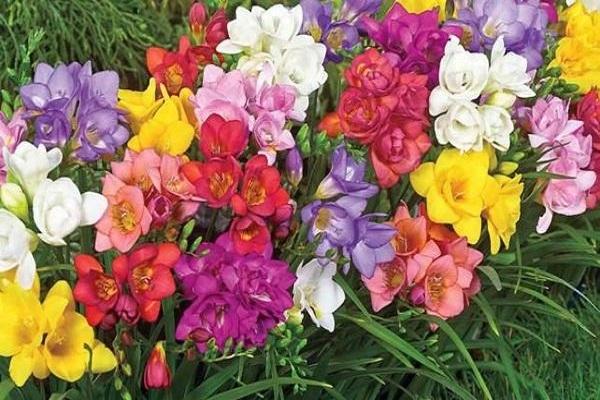
The height of the plants varies, as does the color of the petals. It can be blue, pink, red, yellow, white, purple. The most popular varieties are:
- Broken freesia of the Alba variety. Her bush reaches 40 centimeters, the flowers are large, have a white color scheme.
- Freesia hybrid varieties Red Lion. Bright scarlet inflorescences with double, large petals give decorative effect to tall (up to 1 meter) bushes.
- Freesia hybrid Vinita gold. It is a plant with yellow-orange inflorescences. The hybrid variety is tall.
- Freesia Armstrong of the Cardinal variety. The plant got its name with a red inflorescence in association with the color of the mantle of Cardinal Richelieu.
- Freesia hybrid double mix. The bushes are low, up to 30 centimeters. Double is suitable for growing in a pot.
Note! Tall varieties of freesia need support.
The nuances of growing freesia in the open field
When growing freesia in a greenhouse, you can plant the bulbs at any time.They are planted in open ground when spring comes, and the danger of frost return will disappear.
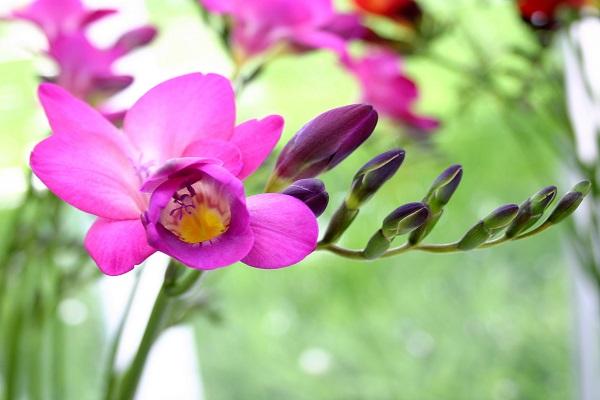
Choosing a site for planting and preparing the soil
Freesia blooms with 12-14 hours of daylight. But the place where the bushes will grow is selected with a little shading and protection from drafts. The soil should be light, fertile. Heavy soil is diluted with peat, sand and humus. Soil preparation is done 2 weeks before planting.
Bulb selection
The bulbs that have passed through special storage are ready for planting. Small tubers will not show flowering, they must be planted separately to grow the bulb. The planting material must be healthy, without stains on it. If there is slight rotting, but it is a pity to throw the bulb away, the affected parts must be cut out, and the sections must be treated with an antifungal drug.

Warming up
Freesia is native to the tropics, so it needs to create a natural aura. The corms are placed in a bag that is kept in a warm room. When the embryos of the roots begin to appear, the temperature is lowered.
Treatment
Before planting, the tubers are soaked in a disinfectant solution. For this, potassium permanganate or other more aggressive chemical preparations are used. The planting material is placed in a disinfectant for 30-60 minutes, then washed and dried. The bottom of the bulbs can be processed in a growth stimulator (Epin, Kornevin) for rapid root formation.
Distillation
In order for the corms to root faster in the open field, they must first be planted in a box or in individual containers. You can plant them in peat pots, then, when transplanted to the site, the roots will not be injured, the plants will quickly adapt in the open area. Containers with seedlings are exposed in a bright room, and the seedlings are watered as needed.
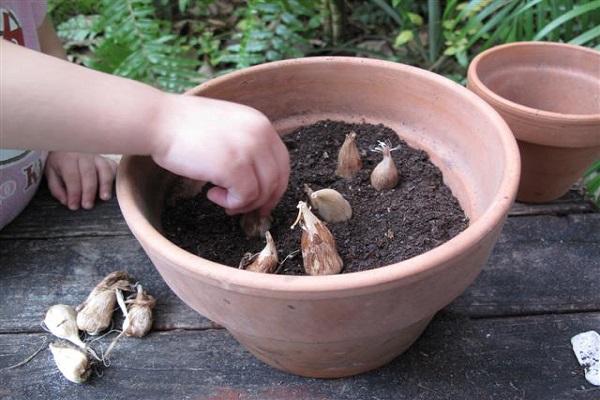
Landing
You need to plant the bulbs in prepared, loose soil. Planting depth depends on the structure of the soil: the denser and heavier it is, the closer to the surface the tubers are planted. The range of their embedding depth is from 6 to 15 centimeters, the distance between the bushes is 3-6 centimeters. Then the garden bed with plants is watered, to preserve moisture in the soil, sprinkle with mulching material.
Features of growing at home
In indoor conditions, the flower is planted in late winter or early spring. A month before planting, the bulbs begin to be prepared. To do this, they are transferred from a warm room to a cooler one, in which the air temperature is kept at about 13 ° C. Then you need to follow these steps:
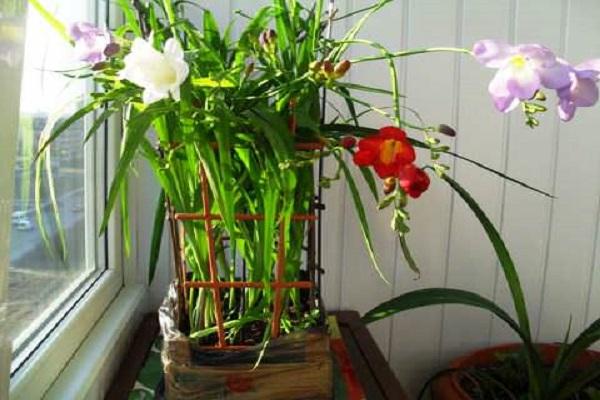
- Choose a pot that must have drainage holes.
- Put expanded clay, small pebbles or broken shards at the bottom.
- Pour on top of the substrate for bulbous plants or prepared independently - from sod and leafy soil, humus, peat.
- Plant several plants in a pot (you can have a variety of colors).
- Place the container in a cool place.
- When sprouts appear, move the pot to a warm, bright room, and water the seedlings for the first time.
The light must hit the freesia for 14 hours, therefore, if there is a lack of lighting, you need to create an additional source of it. In the future, you need to take care of the plants: water, feed, remove dust from the leaves with a soft cloth. After flowering, the inflorescences are cut, otherwise they will grow seeds, taking away the strength from the bulb.
Additional Information. Growing a flower by a certain date is called forcing. For example, if you need to get flowering bushes in March, they start growing in early November.
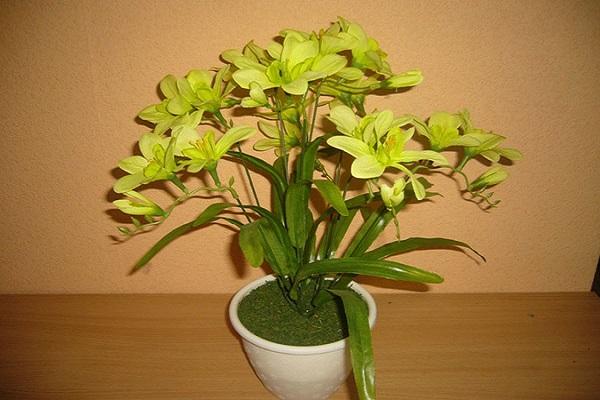
Further care of the plant
In order for freesia to grow decorative, and also to grow seed, it needs constant home care throughout the season.
Organization of watering
Freesia needs abundant watering during the entire period of active growth and flowering.The soil should be kept moist, but not wet all the time. After the plant has faded, watering decreases, then stops altogether. The soil is moistened in the evening, but on condition that the ground part must have time to dry out before dark.
Loosening and weeding
After watering, a crust forms, preventing air from reaching the plant roots. To break it, you need to loosen the soil after each moistening. Loosening and weeding helps to retain moisture around the root system and also inhibits the growth of weeds. The procedure is especially important at the beginning of the vegetative development of freesia.
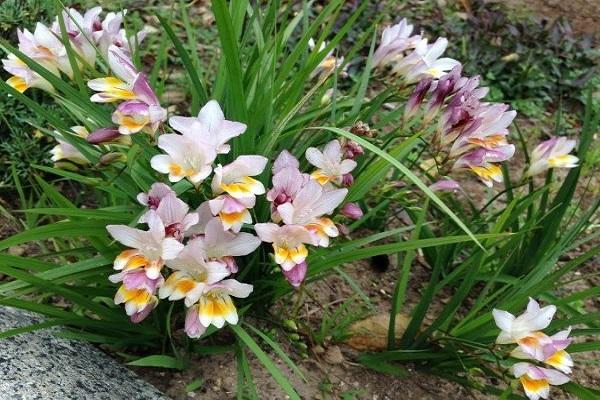
Fertilization
In order for the green part of the plantings to grow healthy, and the flowers to be bright and spectacular, it is necessary to regularly feed. As soon as the shoots hatch, the soil is spilled with a fertilizer solution of the following composition:
- 20 grams of ammonium nitrate;
- 10 liters of water.
The next feeding is done after 15 days. For this, a mixture of the following components is used:
- 40 grams of superphosphate;
- 20 grams of potassium salt;
- 10 liters of water.
Before watering the soil with fertilizers, it must be moistened with plain water.
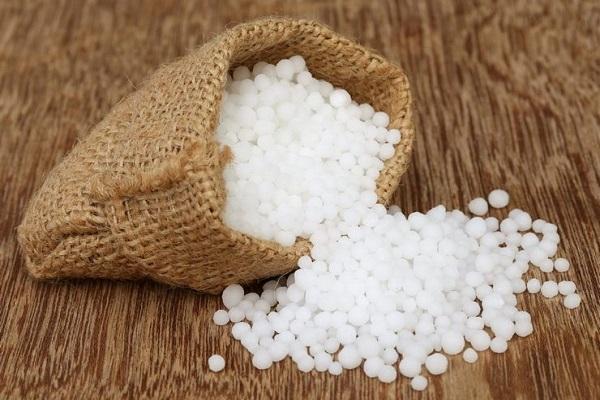
Pruning
After the freesia has faded, the leaves and stems are not immediately removed. Through them, photosynthesis is carried out, which helps to strengthen the bulb. Cut the leaves only after they are completely dry. Disinfected instruments are used for this.
Preparing for winter
When the ground part is completely dry, they begin to dig up the bulbs. They clean off the earth, old scales and roots, after which they are dipped in a weak solution of potassium permanganate. The disinfected bulbs are dried in a warm, ventilated place, then sorted. The cut and rotten seed material is thrown away, the remaining one is laid for storage.
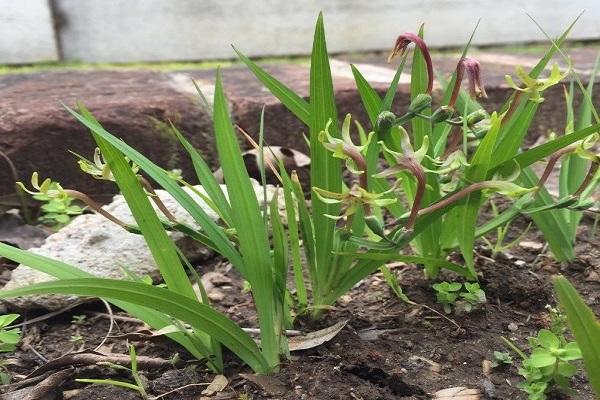
Treatment and prevention of diseases
When freesia is planted in contaminated soil, as well as with improper care, the plants are attacked by pathogens. To avoid this, you need to follow these recommendations:
- before planting, dip the bulbs in a weak solution of potassium permanganate for 30 minutes;
- water the plants with warm water no later than 5 pm;
- prevent stagnation of water in the soil;
- maintain the distance between the bushes so that they can be ventilated;
- before sending the bulbs for storage, hold them in a solution of an antifungal drug or potassium permanganate.
Freesia infected with the fungus must be dug out of the flower garden and burned.
Do you need pest protection?
Freesia can be chosen by such pests as spider mites, aphids, thrips. When the bushes are damaged by harmful insects, the leaves curl, specks appear on them. The decorativeness of plants is lost, so they need to be sprayed. To do this, use various insecticides: they will help keep the bushes healthy.
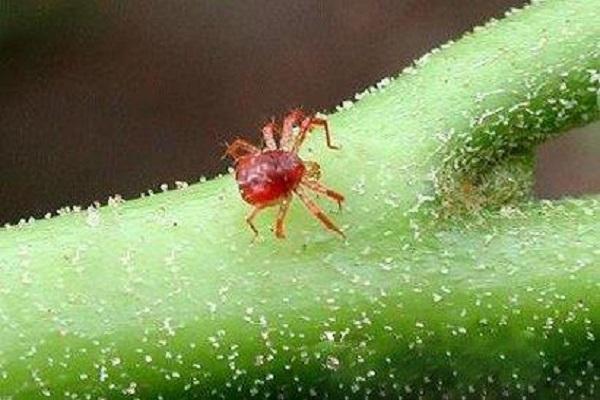
Breeding methods
Freesia propagates by seeds and bulbs. To grow it from seeds, you need to follow these steps:
- Soak the seed for 8-10 hours in water.
- Put drainage at the bottom of the planting box, and on top - a substrate for bulbous plants.
- Lay out the seeds, which are covered with a layer of soil no more than 1 centimeter.
- Cover the top of the box with plastic wrap or glass to create a greenhouse environment.
The mini-greenhouse needs to be ventilated every day, if necessary, moisten the soil with water from a spray bottle. The first shoots will appear soon, after which the seedlings are transplanted into a more spacious container..
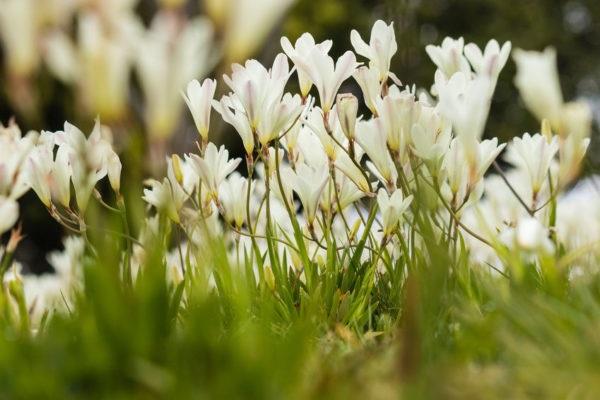
An adult bulb, as it grows, begins to form children around itself, which are separated from it, and sent to grow in a bowl or on a plot. Care for them is the same as for adult bulbs. They will begin to bloom only next season.
Advice! For the seeds to germinate faster, the box with the seedlings must be covered with foil.
Storing freesia bulbs
You can store the bulbs until spring by placing them in dry peat or in hanging nets. In the room where the seed material is wintering, the air should be warmed up to 20 ° C with a humidity of 70-80%. If it is too dry, place a container of water in front of the nets with bulbs. Throughout the winter, they need to be inspected, rotten ones removed, otherwise they can infect all the seed material.

